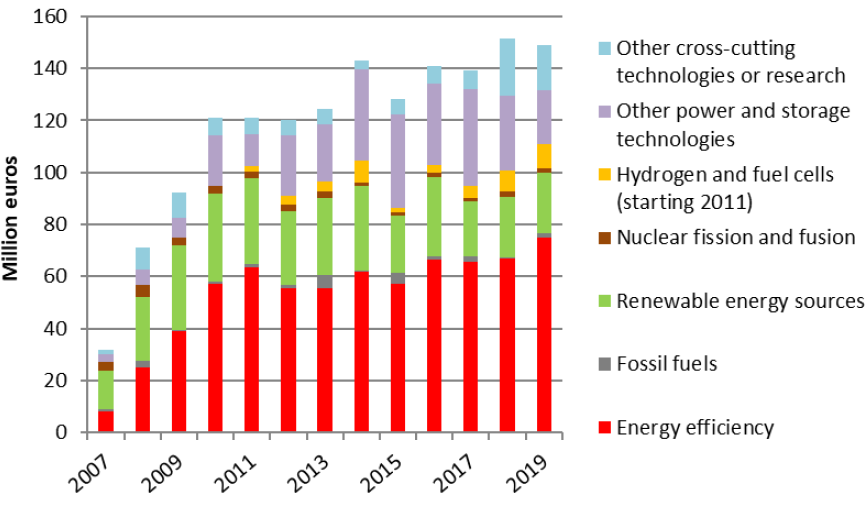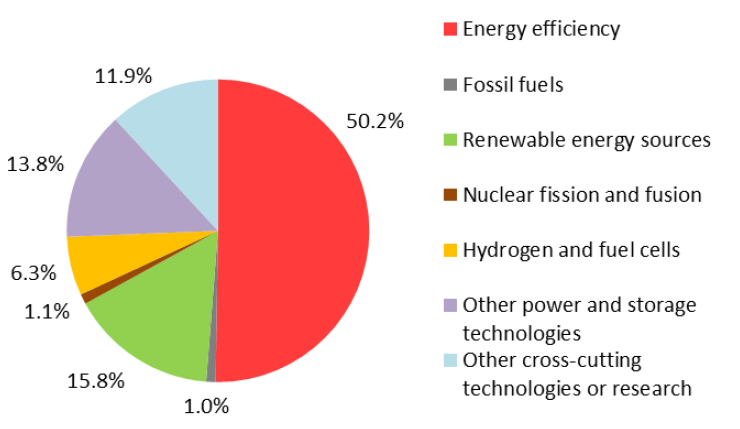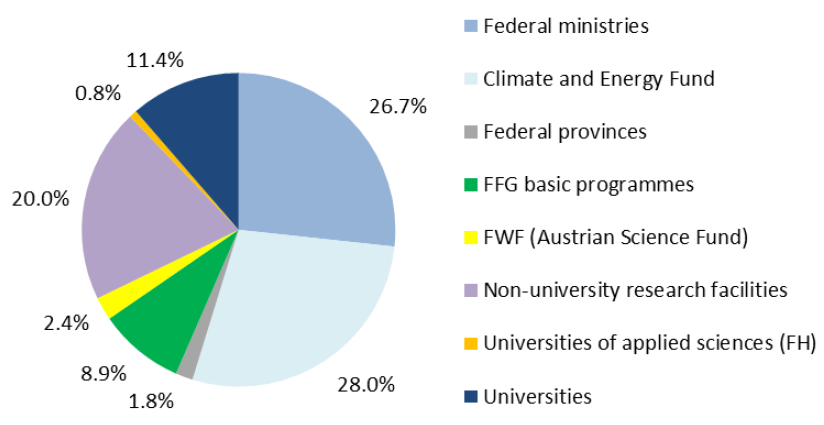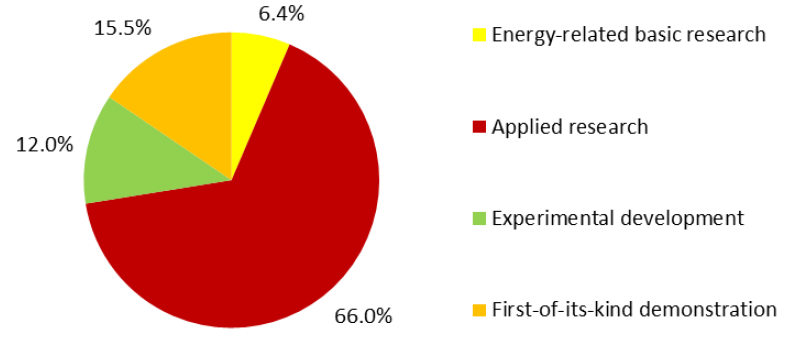Energy R&D 2019: Public Expenditures in Austria
Bibliographic Data
10/2020A. Indinger, M. Katzenschlager
Publisher: BMK
German, 134 pages
Content Description
In 2019, about 1,000 projects and activities for publicly funded energy-related research, development and first-of-a-kind demonstration amounted to 149.1 million euros. Based on a correction notification from the Austrian Institute of Technology (AIT), the expenditure for 2018 was recalculated: It amounted to 151.4 million euros, which is the highest value ever recorded in Austria. An updated year-on-year comparison thus shows a slight decline in public energy research expenditure of 2.3 million euros or minus 1.5% for 2019.
As in previous years, the area of "energy-efficient end-use technologies" is in first place with expenditures of 74.9 million euros. This figure represents a strong increase of 8.1 million euros compared to 2018. Electromobility constitutes an important field of research with a total of 15.4 million euros in 2019, also energy efficiency in industry with 14 million euros and energy-efficient buildings with 13.1 million euros. The areas "renewable energy" (especially biomass and photovoltaics) with 23.5 million euros, "smart grids and storage" with 20.5 million euros and "cross-cutting issues" with 17.7 million euros (which include projects that are located in two or more thematic areas) follow by a comparatively wide margin. Total spending on "hydrogen and fuel cells" continued to rise in 2019 for the fifth consecutive year, reaching 9.4 million euros. The thematic areas "nuclear energy" (1.6 million euros) and "fossil fuels" (1.5 million euros) are far behind in terms of funding, both not a priority in publicly funded energy research in Austria.
About two thirds of the expenditures presented in this report were directly financed by funding authorities (federal government, provinces, funds). The remaining part came from research institutions (including universities) provided with equity capital from federal or provincial budgets.
The Climate and Energy Fund is the institution which has annually provided the highest amount of finance for energy R&D since its beginnings a decade ago. Due to several energy research programmes, this fund spent 41.9 million euros in 2019, which represents a substantial decrease compared to 2018. The expenditures of the federal ministries – either directly or via programmes within their fields of responsibility – totalled up to 39.8 million euros, with the former Federal Ministry for Transport, Innovation and Technology investing about two-thirds of that amount. The Austrian Research Promotion Agency (FFG) as the national funding agency for industrial research and development provided 13.2 million euros with its permanently open calls of general programmes. In addition to that, the FFG is carrying out a bundle of thematic and structural programmes on behalf of ministries and the Climate and Energy Fund. The total expenditures of the nine federal provinces of Austria – with Lower Austria's 1.1 million euros in the lead in 2019 – stabilised around 2.6 million euros. The expenditures of the non-university research institutions based on equity capital provided by the government were almost 30 million euros; the predominant part of this sum was invested by the AIT. Universities (led by Vienna's University of Technology) and also universities of applied sciences spent 16.9 and 1.2 million euros in equity capital, respectively.
Around 1,000 projects and activities were recorded for 2019. 66.0% of the means were used for applied research and 12.0% for experimental development. Expenditures for first-of-a-kind demonstration remarkably amounted to some 15.5% in 2019. Basic research summed up to 6.4% and represents the category with the smallest share in this analysis.
The importance of energy research – measured in terms of public funding – has stagnated in the last decade: this has been substantiated in this report by comparison with the development of the gross domestic product (in 2019 a share of 0.037% was achieved) and total research expenditures in Austria (with a share of 3.4 %, the lowest value in the last ten years).
The gender-specific evaluation of project data shows that Austria certainly has some catching up to do in terms of the participation of women in energy research projects. 18.7% of 230 evaluated projects are headed by women. On average, however, female consortium leaders manage smaller projects than their male colleagues. The proportion of female technicians in the projects is 14.6%.
Downloads




